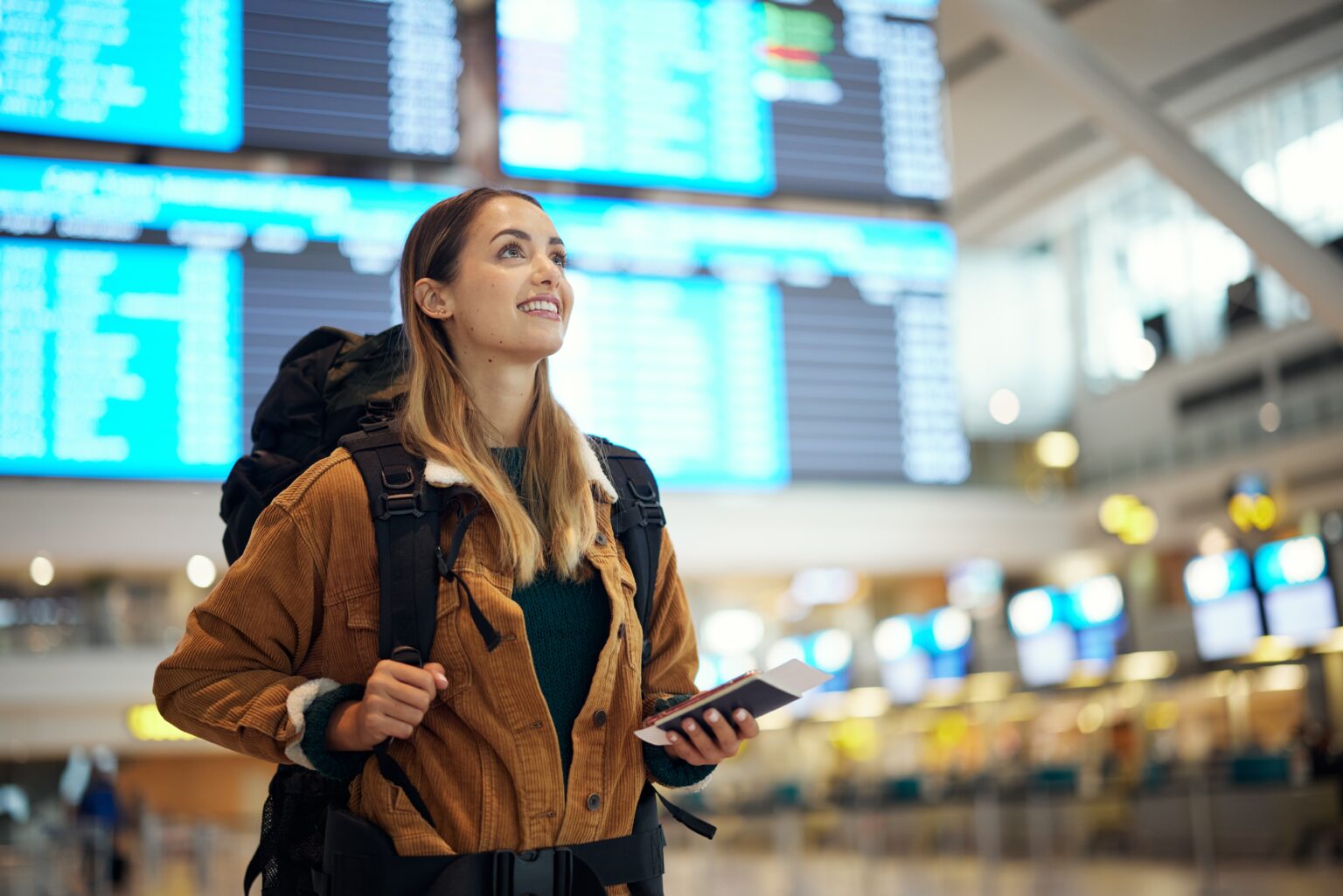Embarking on an international journey can be an exhilarating experience, but it also demands meticulous preparation. Seasoned travellers emphasise the importance of a well-thought-out approach to ensure a smooth and stress-free departure. Following expert guidance, travellers can easily navigate the necessary steps and set themselves up for a comfortable and enjoyable flight.
Essential to this process is understanding what to pack, the optimal time for arrival at the airport, and the documentation required for international travel. Equipped with the proper knowledge and strategies, one can confidently embark on their overseas adventure, leaving behind any potential travel anxieties.
Essential Travel Documentation Checklist
When preparing for international travel, carrying the correct documentation is critical. Travellers should ensure that their passports are up to date with an expiration date that extends at least six months beyond the duration of their trips. This is a typical entry requirement enforced by many countries and airlines.
Furthermore, it’s imperative to research and acquire any travel visas needed for the destination. Visa requirements vary depending on the country, and not having the correct key can result in denial of entry.
- Passport: Verify expiry date and page validity.
- Visas: Confirm requirements and secure before departure.
In addition, travellers are encouraged to:
- Register with the Smart Traveller Enrollment Program (STEP) for updates and safety information.
- Carry health insurance that provides international coverage.
- Complete necessary customs forms for international visits.
- Possess copies of all vital travel documents in case of loss.
It is advisable to frequently check the destination country’s embassy, consular website, or the appropriate government advisory body for up-to-date information on document requirements and travel advisories.
International Travel Immunisation Requirements
When preparing for overseas travel, one should take into account several factors that determine the need for vaccinations:
- Destination Specifics: Certain nations mandate that travellers have immunisation records for diseases such as yellow fever or polio. Increased exposure risks are present when visiting developing regions or countryside areas, potentially necessitating a broader spectrum of vaccines.
- Personal Health Status: Individuals with chronic conditions, compromised immune systems, or those who are pregnant may require additional immunisations for safe travel.
- Vaccination History: Staying current with routine immunisations is crucial since diseases like measles, although rare in some countries, remain prevalent elsewhere.
It is advisable to review the latest guidelines from health authorities or seek professional medical advice to ensure adequate protection and compliance with international health regulations.
Timing Your Vaccinations Before International Travel
It’s advisable to receive vaccinations at least four to six weeks before departure when planning overseas travel. Starting immunisations early benefits the traveller in two key ways:
- Allows the immune system to establish an effective defence against infection.
- Provides sufficient time to administer vaccines that are delivered over multiple sessions.
Pre-Departure Checklist for Your Overseas Journey
With an approaching international flight, being proactive 24 hours before departure is crucial. Commence with online check-in, which will be available on most airlines from now on. This step is vital for international travel, where passport verification is a prerequisite. It’s wise to have your passport ready for this process.
Moreover, installing the airline’s mobile application can be advantageous—it provides a direct channel for real-time updates on your flight status, including any alterations or disruptions.
For individuals on medication, it’s paramount to have a sufficient supply for the duration of your stay abroad, plus additional in case of unforeseen delays. Ensure your medication is packed in your hand luggage in its original containers. Not only does this facilitate easy identification, but it also complies with international medication regulations, potentially averting any complications during security checks or customs.
Booking your airport parking space beforehand can significantly reduce stress on your travel day. Given the high volume of travellers, securing parking in advance prevents last-minute scrambles for a spot.
Lastly, a refresher on current airport security procedures can be helpful. A quick visit to the official security administration’s website can provide you with the latest guidelines to ensure a smooth passage through airport security.
Packaging essential items in your carry-on and keeping crucial travel information readily accessible are critical practices for a calm and collected journey.
Appropriate Attire for Long-distance Air Travel
When embarking on long-haul flights, prioritising comfort in clothing selection enhances the travel experience. Loose-fitting attire is advisable to ensure ease during sleep and to prevent discomfort. Garments that might cause irritation or constriction over extended durations should be avoided.
The aircraft’s cabin temperature, typically between 22-23°C, can fluctuate, making layered clothing a practical choice. Passengers might consider a pashmina or shawl, versatile layers that can double as a blanket.
Items such as an eye mask may also be beneficial for uninterrupted rest. Remaining warm and comfortable while equipped for varying cabin conditions significantly improves the quality of the journey.
Timing Your Arrival at the Airport
- International Flights: Arrive a minimum of three hours prior.
- Security Wait Times: Verify in advance on the airport’s website.
- Bag Check: Allot extra time if you are checking luggage.
- Security Programmes: TSA PreCheck or Clear may reduce wait times.
- Flight Times: Mid-morning and mid-afternoon tend to be busier.
- Seasonal Traffic: High season can lead to longer queues.
When planning your departure for an international journey, arriving at the airport at least three hours before the flight’s departure time is advised. To gauge security wait times, which vary, always check the airport’s official site for updates.
The volume of travellers changes depending on the season, holiday periods, and even the time of day. Generally, more passengers are seen during mid-morning and mid-afternoon compared to early morning or late night. Periods like the winter holidays typically witness an increase in traveller numbers, leading to more congested airports and extended waiting times. If you have memberships like TSA PreCheck or Clear, this could significantly streamline your security screening process.
Understanding Luggage Check Parameters
When planning for an international flight, ensuring a timely arrival at the airport is critical, especially for those with checked luggage. Different airlines enforce specific deadlines for accepting checked baggage before departure. For example, some carriers, like American Airlines, establish a cut-off 60 minutes before the flight’s scheduled departure for international travel.
Travellers are advised to:
- Confirm the individual airline’s baggage check cut-off times
- Arrive early to accommodate these limitations
- Stay informed about your chosen airline’s policies to avoid any setbacks
Packing advice includes:
- Pack Lightly: Streamline your packing list to avoid delays.
- Packing Tips: Prepare efficiently, considering airline restrictions.
Essentials for Your Hand Luggage
When preparing your hand luggage, consider items you cannot afford to lose or those essential during travel. This includes any medication—over-the-counter and prescription medication—and valuables such as jewellery or electronic devices. Not only does this safeguard your necessities, it also ensures you have medication on hand when needed.
Include a portable charger to keep electronic devices powered, a change of clothing, and essential travel documents. For enhanced security, utilise a lock on your hand luggage to deter theft, even when stowed above you.
For comfort and hygiene, pack the following:
- Travel pillow (inflatable for space-saving)
- Moisturiser and other compact toiletries
- A scarf, which can be used as a blanket
- Antibacterial wipes for sanitising surfaces
- A refillable water bottle to stay hydrated
- Snacks for nourishment during the flight
- A pair of glasses, if required, and a pen for filling out any necessary forms
Lastly, payment methods are vital; ensure you carry credit cards securely. It is also practical to download offline maps to your device for navigation post-flight.
Do experts weigh in aisle seats, middle seats, or window seats?
Travellers often consider several factors when deciding where to sit on a flight. The aisle seat is the superior choice for those who value easy access to the aisles. It allows passengers to stretch their legs and access the lavatory with minimal disruption to others.
Conversely, the window seat is favoured by passengers who appreciate a place to rest and enjoy outside views during the flight. This option is ideal for those looking to catch some rest or enjoy a bit of solitude.
The often disregarded middle seat might surprise some with its advantages. In specific aircraft, it provides marginally more legroom—an unexpected benefit. Furthermore, etiquette dictates that the passenger in the middle is entitled to both armrests, offering a bit more space to rest.
Travellers should take note of their seating preferences and plan accordingly. For the best chance at securing a preferred seat, they should choose a fare that permits seat selection or check-in promptly when the airline permits. Frequent strolls to the lavatory are recommended, regardless of seat choice, to alleviate the physical strain of extended periods of sitting.







